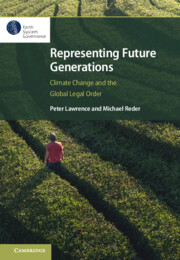Part III - Case Studies
Published online by Cambridge University Press: 19 September 2025
Information
- Type
- Chapter
- Information
- Representing Future GenerationsClimate Change and the Global Legal Order, pp. 143 - 232Publisher: Cambridge University PressPrint publication year: 2025
